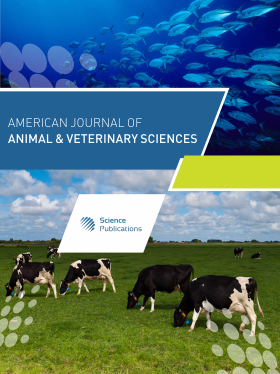Dietary Effects of Magnesium on Histamine Metabolism and Urine Acidity in Domestic Felines
- 1 University of Kentucky, United States
Abstract
Magnesium deficiency has been associated with increased histamine production in rats. Limitation of Mg with acidifying foods is common practice for management of urinary tract health in domestic cats. Nine healthy adult female shorthair cats were used in a 3 period random crossover experiment with fixed treatment sequences to test the effects of dietary Mg (0.06, 0.12 and 0.18% DM) on histamine in blood and urine. The dry-extruded test foods were fed in sufficient amounts to maintain ideal body weight and obtain a target urine pH of 6.3. Each experimental period was preceded by a 7d wash out period, in which the 0.06% Mg food was fed, followed by a 14d feeding period of the appropriate food. Two 24 h total urine collections were performed (d13: Acidified, d14: Un-acidified; immediately iced) and blood was collected on d14. Dry matter intake (p≥0.13) and BW (p≥0.13) were not affected by treatment. Plasma Mg concentration increased linearly with increasing dietary Mg (0.54, 0.56, 0.58 mM; p = 0.001). In contrast, plasma concentrations of threonine, histidine and tryptophan were lower in cats fed 0.12% Mg compare with 0.06 or 0.18% Mg (quadratic, p≤0.03). Urine output (p≥0.17), pH (p≥0.55), NH3 (p≥0.21) and titratable acidity of urine (p≥0.14) were similar across treatments. Urinary histamine excretion responded quadratically (p = 0.02) to treatment (3483, 3369, 3986 ng/d), whereas urinary histamine: Creatinine (p≥0.43) and plasma histamine concentration (p≥0.55) were unaffected. Differences were not detected among treatments in total histamine, cellular + noncellular histamine, (p≥0.11) or antigen-induced (p≥0.21) histamine release in whole blood. These data indicate that dietary Mg concentration, from 0.06-0.18%, does not affect urinary acidity or circulating histamine concentrations, however, supplying Mg at 0.18% may increase urinary histamine excretion.
DOI: https://doi.org/10.3844/ajavsp.2012.186.193

- 6,517 Views
- 5,649 Downloads
- 0 Citations
Download
Keywords
- Cat
- Magnesium
- Histamine
- Urine
